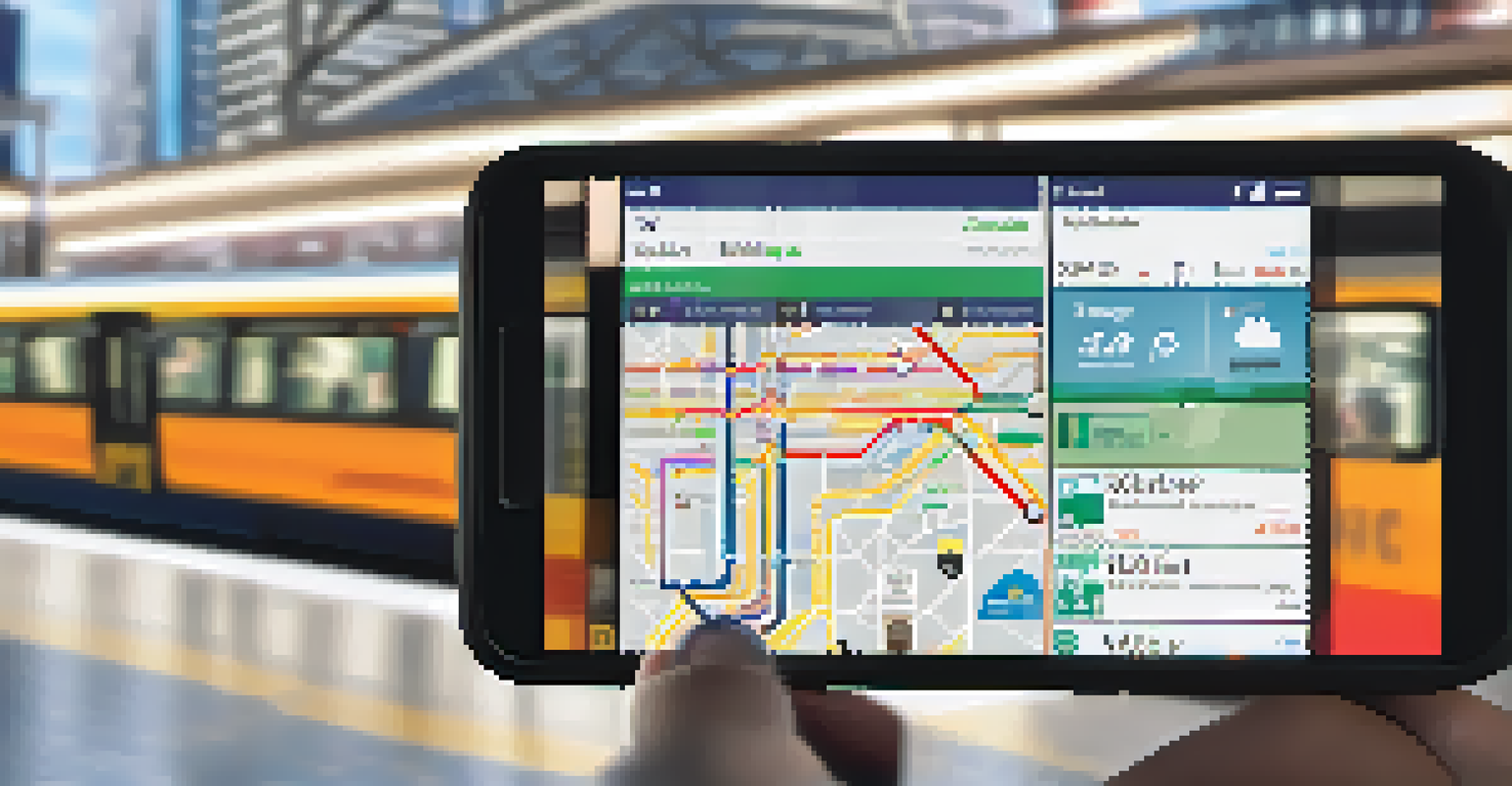Challenges Facing California's Public Transportation Network

High Demand and Insufficient Capacity in Urban Areas
California's urban centers, like Los Angeles and San Francisco, face an ever-growing demand for public transportation. As more residents flock to these cities, the existing transit systems struggle to keep up, leading to overcrowded buses and trains. This situation not only frustrates commuters but also discourages potential users from choosing public transit over personal vehicles.
The future will be green, or not at all.
The challenge lies in the balance between expanding services and managing costs. Cities need to invest in infrastructure and additional vehicles, which can be a considerable financial burden. Moreover, planning new routes and schedules requires extensive research and time, making immediate solutions difficult to implement.
As a result, many commuters face longer wait times and increased travel durations. This cycle can lead to a reliance on cars, which in turn exacerbates traffic congestion and pollution—issues that California is already grappling with.
Funding Shortfalls and Budget Constraints
One of the most pressing challenges for California's public transportation is funding. Many transit agencies operate on tight budgets that often do not reflect the actual demand for services. This financial strain can lead to service cuts, reduced frequency, and even fare increases, which can alienate riders.

State and federal funding sources have been inconsistent, which complicates long-term planning. Public transportation projects often depend on grants and political support, making them vulnerable to changing priorities. As a result, agencies may find themselves scrambling to secure the necessary funding to maintain operations.
Urban Transit Faces Overcrowding
California's urban areas struggle with overcrowded public transport systems due to rising demand and insufficient capacity.
Additionally, the pandemic has further strained transportation budgets due to a decrease in ridership. With fewer passengers, agencies are losing vital revenue, making it even harder to keep services running smoothly and efficiently.
Infrastructure Challenges and Maintenance Issues
California's public transportation infrastructure is aging and often in need of repair. Many systems were built decades ago and require significant upgrades to meet today’s safety and efficiency standards. For instance, outdated tracks and buses can lead to delays and safety hazards, frustrating riders.
Public transportation is a public good, and it is vital to our communities’ economy and environment.
Moreover, maintenance issues are exacerbated by funding shortages. When budgets are tight, agencies may defer essential repairs, which can create a snowball effect of larger, more costly problems down the line. This neglect not only impacts service reliability but also poses risks to the safety of passengers and staff.
Addressing these infrastructure challenges is essential for the long-term sustainability of public transportation in California. However, it requires a concerted effort from government entities, transit agencies, and the community to prioritize and invest in necessary upgrades.
Environmental Concerns and Sustainability Efforts
As California grapples with climate change, the environmental impact of public transportation becomes increasingly important. While transit systems are generally more eco-friendly than personal vehicles, many still rely on fossil fuels, which contribute to air pollution and greenhouse gas emissions. This creates a pressing need for a transition to cleaner energy sources.
Efforts are underway to improve the sustainability of public transportation. For example, cities are exploring electric buses and renewable energy for rail systems. However, the transition requires substantial investment and time, which can be challenging amid budget constraints.
Funding Issues Limit Services
Transit agencies in California face financial challenges that lead to service cuts and increased fares, impacting ridership.
Ultimately, enhancing the sustainability of public transport is not just about reducing emissions; it's also about meeting the needs of a population that is more environmentally conscious than ever. Californians are looking for solutions that align with their values, making this challenge both an opportunity and a necessity.
Equity and Accessibility Issues
Equity in public transportation is a significant concern, particularly in a diverse state like California. Many low-income communities and marginalized groups face barriers to accessing reliable transit options. This can limit their ability to reach jobs, education, and essential services, perpetuating a cycle of disadvantage.
Moreover, not all transit systems are designed with accessibility in mind. Individuals with disabilities often struggle with inadequate facilities and services, making it challenging for them to navigate public transport. Ensuring that all community members can access transit options is not just a moral obligation; it’s a legal requirement under the Americans with Disabilities Act.
Addressing these equity issues requires a multifaceted approach, including community engagement to understand specific needs and targeted investments to improve services. By prioritizing accessibility, California can create a more inclusive public transportation system that serves everyone.
Technological Advancements and Integration Challenges
Technology has the potential to revolutionize public transportation, yet integrating these advancements presents its own set of challenges. From mobile ticketing to real-time tracking, innovations can streamline the commuting experience and attract new riders. However, many transit agencies struggle with outdated systems that hinder implementation.
Interoperability between different transportation modes—such as buses, trains, and rideshares—remains a significant hurdle. Riders often face confusion when switching between services, which can deter them from using public transit altogether. A seamless integration of services would not only improve user experience but also enhance overall efficiency.
Equity Gaps in Transit Access
Many low-income and marginalized communities in California encounter barriers to accessing reliable public transportation.
Additionally, investments in technology require upfront costs and ongoing maintenance, which can strain already tight budgets. Finding a balance between embracing innovation and managing financial realities is crucial for the future of California's public transportation systems.
Public Perception and Ridership Challenges
Public perception plays a vital role in the success of California's public transportation systems. Many individuals view these services as inconvenient or unreliable, which can lead to a reluctance to use them. Overcoming these stereotypes is essential for increasing ridership and fostering a culture of public transport use.
Moreover, the stigma associated with public transportation often stems from negative experiences, such as overcrowding and safety concerns. Addressing these issues head-on through improved services and better communication can help shift public perception. When people see that transit is a viable and efficient option, they may be more inclined to make the switch from driving.

Efforts to promote public transportation must also highlight its benefits, such as reduced traffic congestion and lower environmental impact. By reframing the narrative around public transit, California can encourage more residents to embrace it as a reliable mode of transport.